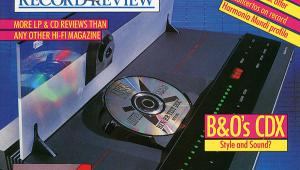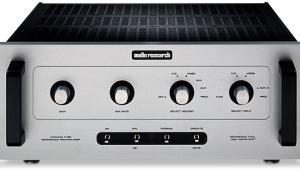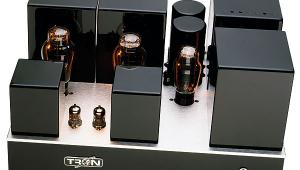High-End Amps
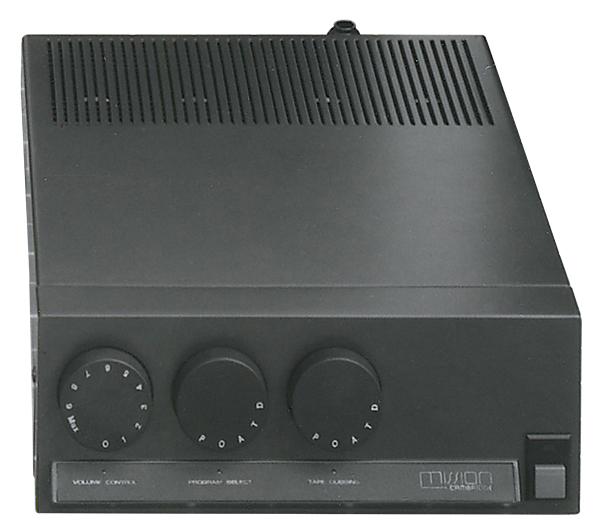
Following last month's batch of integrated amplifiers costing under the £200 mark, more advanced models have been chosen for this project. The new Mission 778 (Mission Cambridge) represents the UK contribution (£240). The Harman Kardon PM650 combines Japanese and American design (£250), while the European contender is the Revox B251 (£900 plus £45 for the remote controller). All three models are integrated amps with MC and MM input facilities. I also look at another new UK model, the powerhouse P128 from Sugden, which is a dual 'monoblock' power amp (£395).
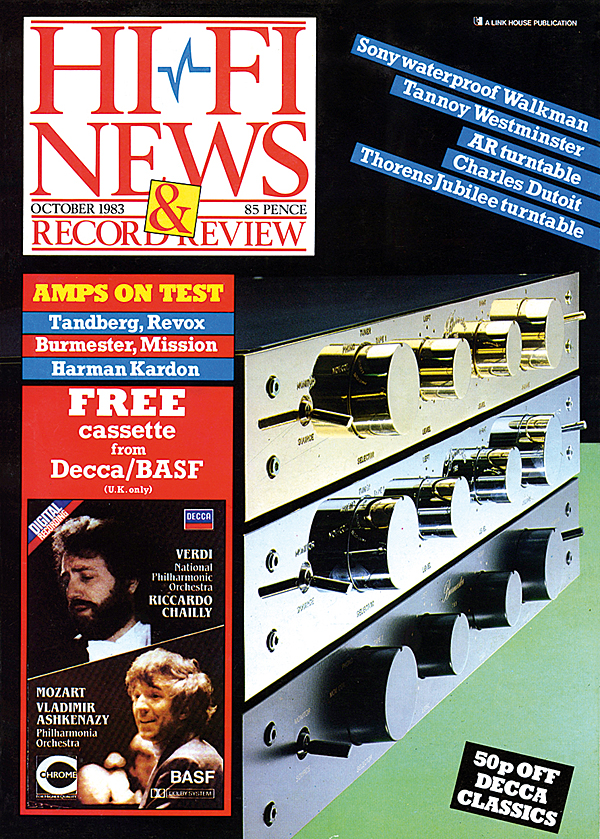
Mission 778
While quite a substantial amplifier in its own right, the 778 does have one particularly interesting feature. A high-power multi-pin socket is located at one side, and an optional unit may be added here at a later date containing a much enhanced power supply to boost the current and storage capacity of the existing amplifier. This model breaks new ground among UK designs in its price category in another respect, by offering a substantial output stage using MOSFET output devices.
The Mission 778 has no tone or 'loudness' controls or filters. Likewise balance, mode, and other inessential features have been omitted. lt does, however, have a rear panel link plug which may be removed to allow interconnection of electronic crossovers and the like between pre and power amplifier. (And if desired, an equaliser could be fitted.)
On the input side it can cater for both MM and MC cartridges (one set of terminals with a moveable plug to change the facility), plus tuner, tape and CD. A second selector switch responsible for Record Out is controlled independently of the main signal passing through the amplifier, and an 'off' position removes any connected ancillary from the signal path.
At the rear, awkwardly located high-power binding posts are used for speaker connection, while the remaining sockets are phonos. The stereo/ mono switch is also present here. Scanning the supplied specification, the unit is rated at 17dBW continuous, 20Hz to 20kHz both channels driven. On peaks a program delivery of 18 to 19dBW is to be expected, and a peak current rating of 20A is a promising indication of load tolerance. Distortion is claimed as typically –75dB. Used as a preamplifier section only, it is said to deliver up to 10V output with distortion levels below –80dB.
Examination of the interior revealed a very high standard of construction, with fine components and high rigidity using double-sided military grade boards. The amp's external finish was also very good.
![]() Sound Quality
Sound Quality
This was clearly a strong performer. Not perfect, of course, but the 778 was still sufficiently good to raise doubts over the musical superiority of the company's more expensive 777/776 pre/power combination, the 778's strength seemingly associated with marked advances in preamp performance.
Fed CD program, the sound was characterised by a sweet, neutral balance, with good clarity, detail and depth. The bass was powerful and well extended, if slightly softened in terms of percussive attack. The stereo 'focus' was only slightly behind that of our costly references, while the mid was very pleasant and the treble quality judged to be well above average.
Via disc (MM) the sound quality was almost as good, with slightly less stereo precision, but the musical mid and treble were still in evidence. Switching over to the moving-coil phono input the deterioration was minimal, and the easy musical quality was confidently maintained.
Conclusion
The Mission 778 performs well for the price, delivering above average sound quality. Its unusual facilities (or perhaps more accurately the absence of frivolous extras), plus a useful combination of inputs means the prospective purchaser should give careful consideration to the level and matching of the ancillary cartridge and speakers.
It seems to me that it is quite an achievement to produce a fine quality, high dynamic range amplifier with good sounding moving-coil facilities at such a reasonable price. The Mission 778 is clearly a model that must be tried.
Revox B251
At close on £900, the B251 is one of the most powerful and costly integrated amplifiers ever built. It represents a triumph of system engineering, microprocessors and digital memories being harnessed to provide extremely versatile signal handling. Every input and output may be precisely matched for level and sensitivity, and these pre-programmed settings are stored in a non-volatile (permanent even when switched off) digital memory.
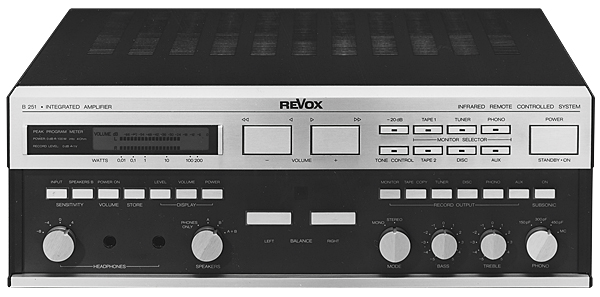
Complementing this highly organised system is an optional infra-red remote control which allows command of most of the front panel functions. This amplifier forms part of the forthcoming Revox system, which also comprises the new 200 series tuner and Revox CD player, and the same remote control unit will operate all this equipment.
A brief rundown of the specification is revealing of the B251's capabilities. At around 22dBW (approx 150W/8ohm), it is certainly powerful, while the power spec. also covers 4ohm loads. For program peaks, the output level is claimed to be maintained into this lower impedance, which bodes well for the amplifier's load tolerance.
Two sets of loudspeakers may be connected, used separately or together, or they may be switched out, leaving the headphone socket with its separate level control. Seven signal sources may be connected in addition to an external graphic equaliser if desired (parametric or third-octave types, perhaps). The line level inputs, notionally labelled tuner, tape, auxiliary, CD, tape 1 and tape 2, all have sensitivity settings variable up to 2.3V. The moving-magnet input covers a full 1.6mV to 23mV sensitivity range, with a 47kohm input impedance and parallel capacitances variable from 68 to 400pF. The moving-coil input ranges from 100µV to 1.2mV in sensitivity, with a fixed 100ohm resistive input impedance.
Outputs include tape 1 and 2, variable from 100mV to 1.7V, plus tape copy (fixed 500mV nominal), external filter, and headphones. Almost any conceivable audio component can be matched successfully with the B251 amplifier!
Tone controls can be switched into circuit, providing maximum cut and boost at 30Hz (±12dB) and at 15kHz (±7dB). An 18Hz, 18dB/octave (3rd-order) subsonic filter is also available, and may be assigned via a memory entry to any source input as required. The switch-on volume level of both pairs of speaker outlets may be separately programmed to come on at a level that's preset.
The description would not be complete, however, without mention of the LCD back-lit two-channel power/level indicator. This wide range true peak-reading meter has many functions, these automatically set during the various operating modes. Normally it acts as a stereo power output meter, but may also be used as a program meter for accurate monitoring of record level output. Selected automatically, other scales provide the calibration for input sensitivity as well as output level programming and channel balance.
While it would take some time to set up this amplifier, once done many of the minor annoyances incurred when running a complex system with numerous ancillaries would be removed. Record/replay levels would always be right, and all sources would play at approximately the right level, over a decent range of volume control travel.
![]() Sound Quality
Sound Quality
Looking at the positive features first, this amp seemed graceful and effortless in its power delivery, was hard to overload and also sounded clean enough when momentarily clipped. No trouble of any kind was experienced, including obvious noise or hum, with the wide variety of signal sources we tried.


